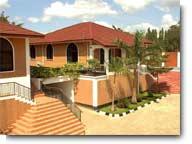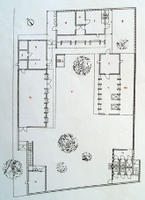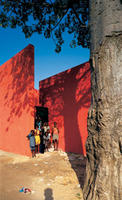
The art tradition of house painting or traditional house decoration is common among the numerous cultures of North and sub Saharan Africa. The Ndebele, Mbari and Basotho people of South Africa produce one of the most beautifully painted houses by using bright colours and patterned ornamentation.
According to an excerpt from a webpage of the Eastern Illinois
University "...Ndebele painted houses are a "tradition" that is barely more than 50 years old, although there appears to be an earlier practice of painting house walls with earth-toned colors and an even earlier practice than that of decorating walls by scratching patterns into the wet plaster with one's fingers.
The earlier patterns are believed, unlike the more recent painted patterns, to have sacred powers and to have been made in response to demands by the ancestors...”
Photo Courtesy of Kristen Elsby (a.k.a Lil) and Kodia











